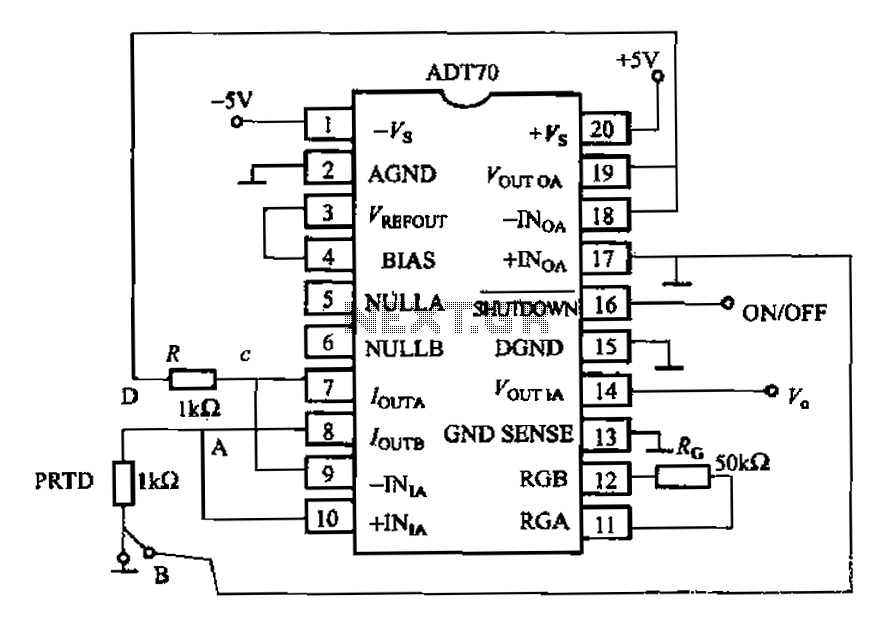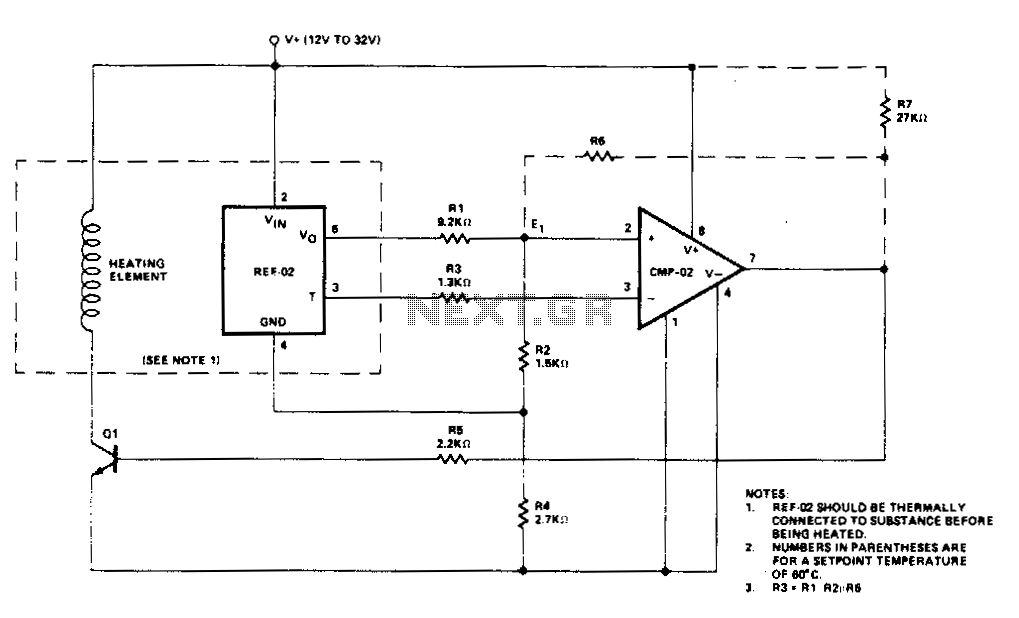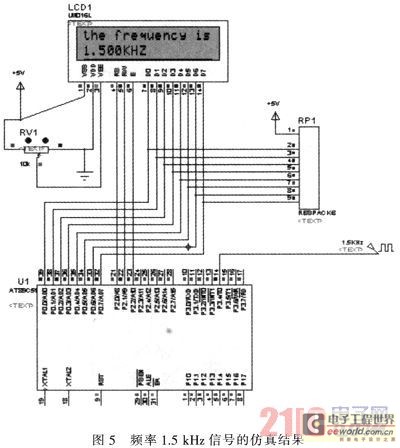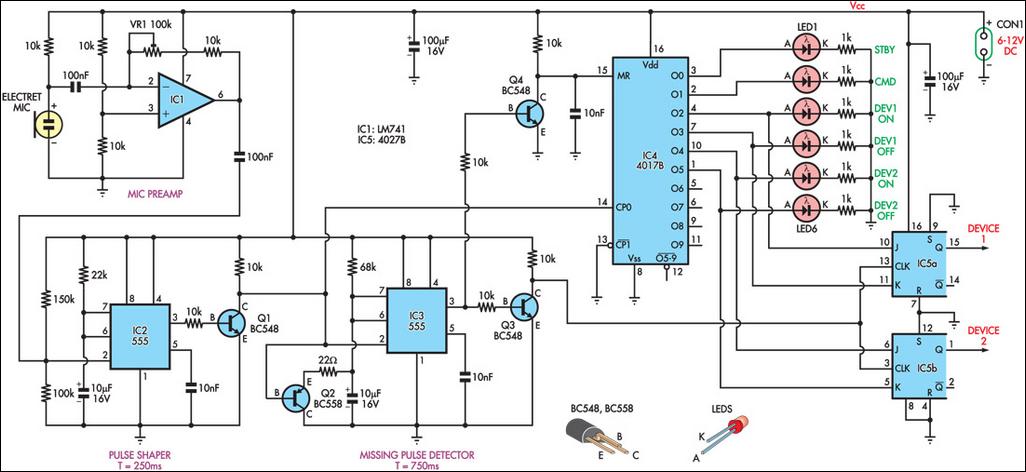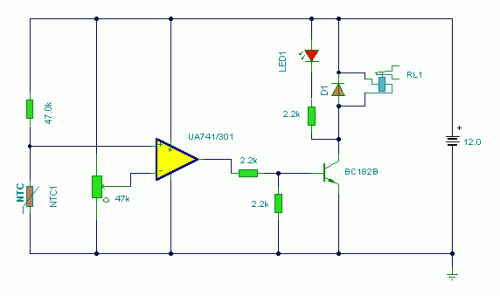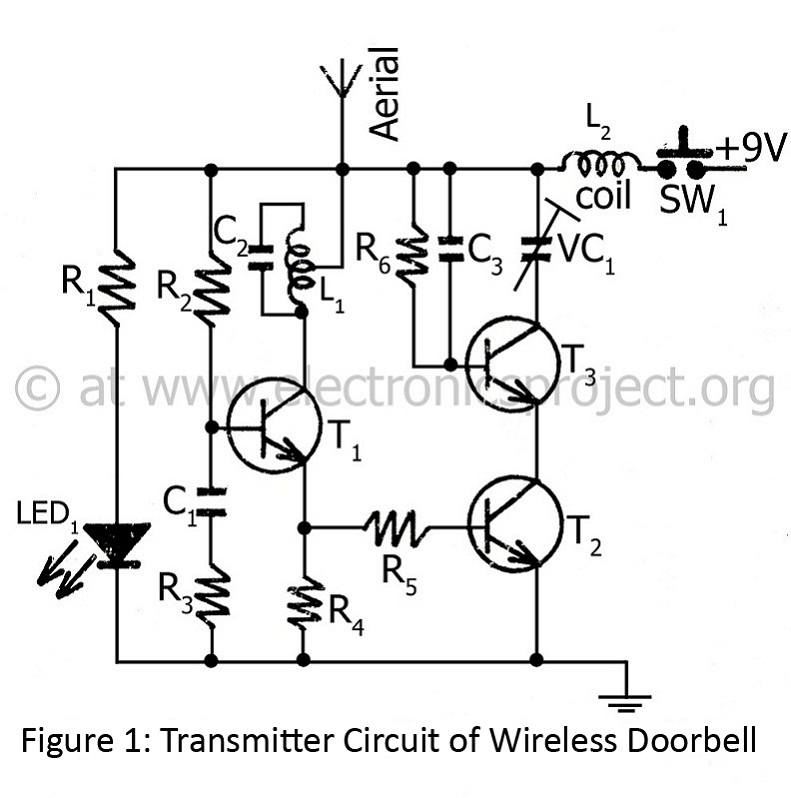
Temperature Controlled Kitchen Exhaust Fan
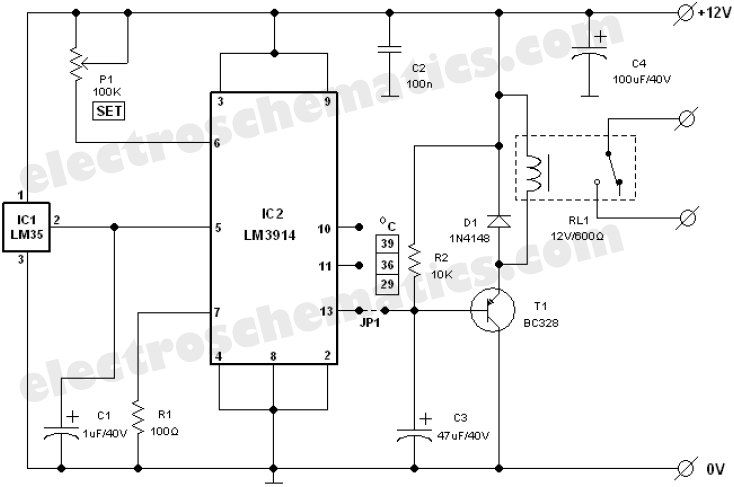
An exhaust fan is a crucial component in kitchens. This document presents a simple circuit designed to control kitchen fans by monitoring the ambient temperature. It is built around...
The circuit for controlling an exhaust fan based on ambient temperature typically includes a temperature sensor, a microcontroller or comparator, and a relay to switch the fan on or off. The temperature sensor, often a thermistor or an LM35, detects the ambient temperature and converts it into an electrical signal. This signal is then fed into a microcontroller or a comparator circuit, which processes the input and determines whether the temperature exceeds a predefined threshold.
When the ambient temperature rises above the set limit, the microcontroller activates a relay, which in turn powers the exhaust fan. The relay serves as a switch that allows the higher voltage required by the fan to be controlled by the lower voltage signal from the microcontroller. Additionally, the circuit may include a potentiometer to adjust the temperature threshold, allowing for customization based on specific kitchen conditions.
For safety and reliability, it is advisable to integrate a fuse in series with the fan to protect against overloads. A diode can also be placed in parallel with the relay coil to prevent back EMF from damaging the microcontroller when the relay is deactivated. The circuit can be powered by a standard AC supply, with appropriate voltage regulation and isolation measures to ensure safe operation.
Overall, this temperature-controlled exhaust fan circuit enhances kitchen ventilation efficiency by automatically activating the fan when necessary, thus contributing to a more comfortable cooking environment.Exhaust fan is an important component in kitchens. Here is a simple circuit to control kitchen fans by monitoring the ambient temperature. It is built arou.. 🔗 External reference
The circuit for controlling an exhaust fan based on ambient temperature typically includes a temperature sensor, a microcontroller or comparator, and a relay to switch the fan on or off. The temperature sensor, often a thermistor or an LM35, detects the ambient temperature and converts it into an electrical signal. This signal is then fed into a microcontroller or a comparator circuit, which processes the input and determines whether the temperature exceeds a predefined threshold.
When the ambient temperature rises above the set limit, the microcontroller activates a relay, which in turn powers the exhaust fan. The relay serves as a switch that allows the higher voltage required by the fan to be controlled by the lower voltage signal from the microcontroller. Additionally, the circuit may include a potentiometer to adjust the temperature threshold, allowing for customization based on specific kitchen conditions.
For safety and reliability, it is advisable to integrate a fuse in series with the fan to protect against overloads. A diode can also be placed in parallel with the relay coil to prevent back EMF from damaging the microcontroller when the relay is deactivated. The circuit can be powered by a standard AC supply, with appropriate voltage regulation and isolation measures to ensure safe operation.
Overall, this temperature-controlled exhaust fan circuit enhances kitchen ventilation efficiency by automatically activating the fan when necessary, thus contributing to a more comfortable cooking environment.Exhaust fan is an important component in kitchens. Here is a simple circuit to control kitchen fans by monitoring the ambient temperature. It is built arou.. 🔗 External reference
Warning: include(partials/cookie-banner.php): Failed to open stream: Permission denied in /var/www/html/nextgr/view-circuit.php on line 713
Warning: include(): Failed opening 'partials/cookie-banner.php' for inclusion (include_path='.:/usr/share/php') in /var/www/html/nextgr/view-circuit.php on line 713
